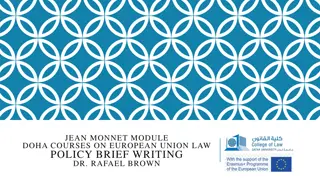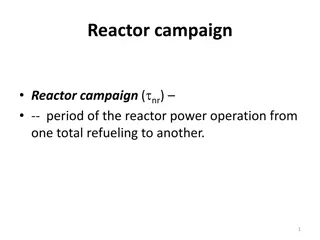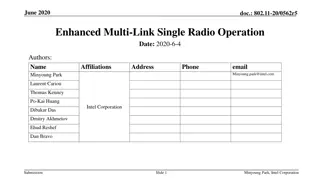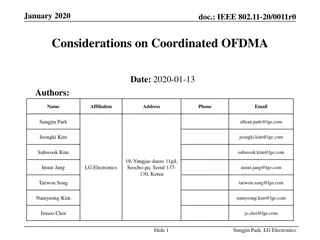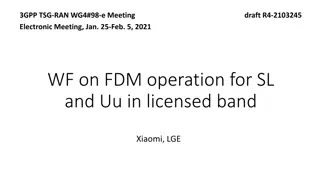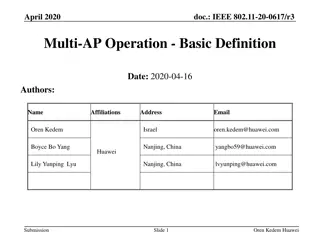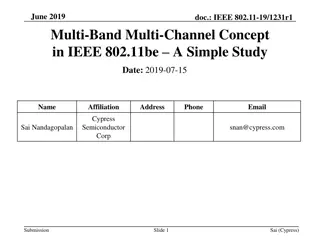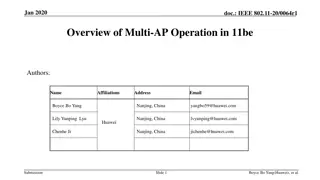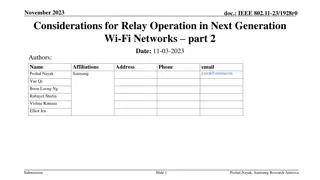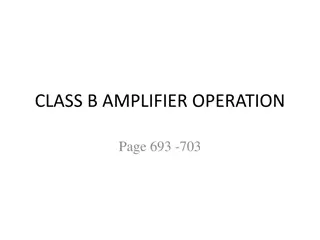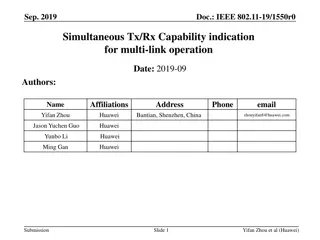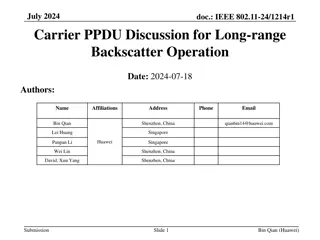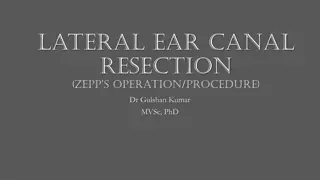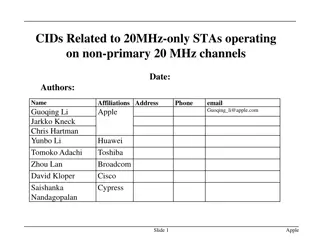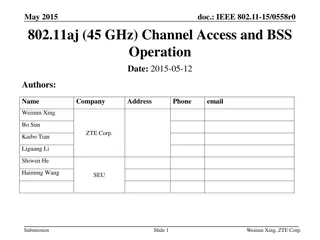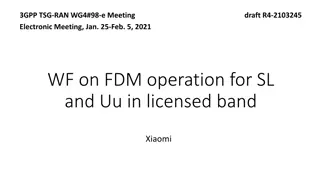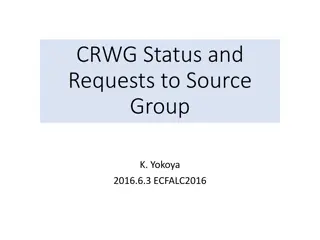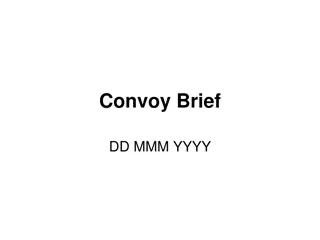Operation Research: A Brief Overview
Operation Research (O.R.) is a scientific method applied to aid management in decision-making through quantitative analysis. Originating during World War II, O.R. helps in finding optimal solutions to system operation problems. It involves the use of scientific methods and tools to tackle various management challenges effectively.
Download Presentation

Please find below an Image/Link to download the presentation.
The content on the website is provided AS IS for your information and personal use only. It may not be sold, licensed, or shared on other websites without obtaining consent from the author.If you encounter any issues during the download, it is possible that the publisher has removed the file from their server.
You are allowed to download the files provided on this website for personal or commercial use, subject to the condition that they are used lawfully. All files are the property of their respective owners.
The content on the website is provided AS IS for your information and personal use only. It may not be sold, licensed, or shared on other websites without obtaining consent from the author.
E N D
Presentation Transcript
Unit I Operation Research By: Dr. Pravin Kumar Agrawal Assistant Professor CSJMU
History It is the method of analysis by which management receives aid for their decisions. Though the name of this method, Operation Research (O.R.) is relatively new, but the method used for this is not a new one. Operation Research is concerned with the application of the principles and the methods of science to the problems of strategy. The subject of operation research was born during Second World War in U.K., and was used for military strategy. During World War II, a group of scientists, having representatives from mathematics, statistics, physical and social sciences were entrusted to the study of various military operations. 3
History This team was very successful and greatly contributed to the meticulous handling of entire operation and related problems of the operation. The need for assigning such studies for operations arose because military strategies and their decisions become so important and costly and therefore, the best scientists, under the sponsorship of military organs were grouped together to provide quantitative information s by adopting scientific techniques and methods for facilitating in taking decisions. 4
Definition It is the application of scientific methods, techniques and tools to problems involving the operations of a system so as to provide those in the control of the system with optimum solutions to the problems. Operation Research is a tool for taking decisions which searches for the optimum results in parity with the overall objectives and constraints of the organization. 5
Definition O.R. is a scientific method of providing executive department with a quantitative basis of decisions regarding the operations under their control. O.R. is a scientific approach to problem solving for management. 6
Definition O.R. is an aid for executive in making his decisions by providing him with the needed information s based on the scientific method of analysis. quantitative 7
Significance It can be used for solving different types of problems, such as: Problems dealing with the waiting line, the arrival of units or persons requiring service. Problems dealing with the allocation of material or activities among limited facilities. Equipment replacement problems. Problems dealing with production processing i.e., production control and material shipment. 8
Characteristics (i) Inter disciplinary Team Approach This requires an inter-disciplinary team including individuals mathematics, statistics, engineering, material sciences, computer etc. with skills economics, in 9
Characteristics (ii) Holistic Approach to the System: While evaluating any decision, the important interactions and their impact on the whole organization against the functions originally involved are reviewed 10
Characteristics (iii) Methodological Approach: O.R. utilizes the scientific method to solve the problem 11
Characteristics (iv) Objective Approach: O.R. attempts to find the best or optimal solution to the problem under consideration, taking into account the goals of the organization 12
Limitations of Operations Research Do not take into account qualitative and emotional factors. Applicable to only specific categories of decision- making problems. Required to be interpreted correctly. Due to conventional thinking, changes face lot of resistance from workers and sometimes even from employer. Models are only idealized representation of reality and not be regarded as absolute. 13
Limitations of Operations Research Time consuming and the results are difficult to control and evaluate. 14
Applications (i) Distribution or Transportation Problems: In such problems, various centres with their demands are given and various warehouses with their stock positions are also known, then by using linear programming technique, we can find out most economical distribution of the products to various centers from various warehouses. (ii) Product Mix: These techniques can be applied to determine best mix of the products for a plant with available resources, so as to get maximum profit or minimum cost of production. (iii) Production Planning: These techniques can also be applied to allocate various jobs to different machines so as to get maximum profit or to maximize production or to minimize total production time. 15
Applications (iv) Assignment of Personnel: Similarly, this technique can be applied for assignment of different personnel with different aptitude to different jobs so as to complete the task within a minimum time. (v) Agricultural Production: We can also apply this technique to maximise cultivator s profit, involving cultivation of number of items with different returns and cropping time in different type of lands having variable fertility. (vi) Financial Applications: Many financial decision making problems can be solved by using linear programming technique. 16
Uses of operations research Scheduling and time management Urban and agricultural planning Enterprise resource planning (ERP) and supply chain management (SCM) Inventory management Network optimization and engineering Packet routing optimization Risk management 17
Scope/Application Agriculture With the sudden increase of population and resulting shortage of food, every country is facing the problem of Optimum allocation of land to a variety of crops as per the climatic conditions Optimum distribution of water from numerous resources like canal for irrigation purposes Hence there is a requirement of determining best policies under the given restrictions. Therefore a good quantity of work can be done in this direction. 18
Finance In these recent times of economic crisis, it has become very essential for every government to do a careful planning for the economic progress of the country. OR techniques can be productively applied To determine the profit plan for the company To maximize the per capita income with least amount of resources To decide on the best replacement policies, etc 19
Finance Budgeting and investments (a) Cash flow analysis, long range capital requirements, investment portfolios, dividend policies etc. (b) Credit policies credit risks and delinquent account procedures-claim and complaint procedures. (c) Break even analysis, capital budgeting, cost allocation and control, and financial planning 20
Industry If the industry manager makes his policies simply on the basis of his past experience and a day approaches when he gets retirement, then a serious loss is encounter ahead of the industry. This heavy loss can be right away compensated through appointing a young specialist of OR techniques in business management. Thus OR is helpful for the industry director in deciding optimum distribution of several limited resources like men, machines, material etc to reach at the optimum decision 21
Marketing Where to allocate the products for sale so that the total cost of transportation is set to be minimum The minimum per unit sale price The size of the stock to come across with the future demand How to choose the best advertising media with respect to cost, time etc? How, when and what to buy at the minimum cost? 22
Marketing Product selection, timing competitive actions. Advertising strategy and choice of different media of advertising Number of salesman frequency of calling of account etc Effectiveness of market research Size of the stock to meet the future demand 23
Personnel Management techniques in To appoint the highly suitable person on minimum salary To know the best age of retirement for the employees To find out the number of persons appointed in full time basis when the workload is seasonal A personnel manager can utilize OR 24
Personnel Management Recruitment policies and assignment of jobs Selection of suitable personnel on minimum salary Mixes of age and skills Establishing equitable bonus systems 25
Production Management A production manager can utilize OR techniques in To calculate the number and size of the items to be produced In scheduling and sequencing the production machines In computing the optimum product mix To choose, locate and design the sites for the production plans 26
Production Management Physical distribution. (a) Location and size of warehouses distribution centers retail outlets etc. (b) Distribution policy. Manufacturing and facility planning. (a) Production scheduling and sequencing (b) Project scheduling and allocation or resources. (c) Number and location of factories were houses hospitals and their sizes. (d) Determining the optimum production mix. Manufacturing (a) Maintenance policies and preventive maintenance (b) Maintenance crew sizes. 27
Production Management Form all above areas of applications we may conclude that OR can be widely used in taking timely management decisions and also used as a corrective measure. The application of this tool involves certain data and not merely a personality of decision maker and hence we can say OR has replaced management by personality 28
Production Management Besides its use in industry this new technique was also utilized in a number of socio-economic problems which came up after the war. Operations Research has come to be used in a very large number of areas such as problems of traffic question of deciding a suitable for public transport or industrial processes like ore-handling Its use has now extended to academic spheres, such as the problems of communication of information socio- economic fields and national planning. The real development of Operation Research in the national field was carried out by prof. Mahalanobis in India when he used it in national planning. 29
Production Management OR is also being used in Railways. Waiting or queucing problems of passengers for tickets at booking windows or trains queuing up in marshalling yard waiting to be sorted out are tackled by various OR techniques. OR approach is also applicable to enable the L.I.C. offices of decide: (i) What should be the premium rates for various modes of policies? (ii) How best the profits could be distributed in the cases of with profit policies? etc. 30
Purchasing, Procurement and Exploration Optimal buying and reordering with or without price quantity discount Transportation planning Replacement policies Bidding policies Vendor analysis 31
Purchasing, Procurement and Exploration Production Management (Facilities planning) Location and size of warehouse or new plant, distribution centers and retail outlets Logistics, layout and engineering design Transportation, planning and scheduling Manufacturing Aggregate production planning, assembly line, blending, purchasing and inventory control Employment, training, layoffs and quality control Allocating R&D budgets most effectively 32
Purchasing, Procurement and Exploration Maintenance and project scheduling Maintenance policies and preventive maintenance Maintenance crew size and scheduling Project scheduling and al location of resources 33
Role of Operations Research in Decision-Making
Role of Operations Research in Decision-Making The Operation Research may be considered as a tool which is employed to raise the efficiency of management decisions. OR is the objective complement to the subjective feeling of the administrator (decision maker). Scientific method of OR is used to comprehend and explain the phenomena of operating system. The benefits of OR study approach in business and management decision making may be categorize as follows 35
Better control The management of large concerns finds it much expensive to give supervisions over routine decisions. continuous executive An OR approach directs the executives to dedicate their concentration to more pressing matters. For instance, OR approach handles production scheduling and inventory control. 36
Better coordination Sometimes OR has been very helpful in preserving the law and order situation out of disorder. For instance, an OR based planning model turns out to be a vehicle for coordinating marketing decisions with the restrictions forced on manufacturing capabilities. 37
Better system OR study is also initiated to examine a particular problem of decision making like setting up a new warehouse. Later OR approach can be more developed into a system to be employed frequently. As a result the cost of undertaking the first application may get better profits. 38
Better decisions OR models regularly give actions that do enhance an intuitive decision making. Sometimes a situation may be so complex that the human mind can never expect to assimilate all the significant factors without the aid of OR and computer analysis. 39
APPLICATIONS OF OPERATIONS RESEARCH Some of the industrial/government/business problems that can be analyzed by the OR approach has been arranged by functional areas as follows: 40
Finance and Accounting Dividend policies, investment and portfolio management, auditing, balance sheet and cash flow analysis Claim and complaint procedure, and public accounting Break even analysis, capital budgeting, cost allocation and control, and financial planning Establishing costs for developing standard costs by-products and 41
Marketing Selection or product-mix, marketing and export planning Advertising, media planning, selection and effective packing alternatives Sales effort allocation and assignment Launching a new product at the best possible time Predicting customer loyalty 42
Purchasing, Procurement and Exploration Optimal buying and reordering with or without price quantity discount Transportation planning Replacement policies Bidding policies Vendor analysis 43
Purchasing, Procurement and Exploration Production Management (Facilities planning) Location and size of warehouse or new plant, distribution centers and retail outlets Logistics, layout and engineering design Transportation, planning and scheduling Manufacturing Aggregate production planning, assembly line, blending, purchasing and inventory control Employment, training, layoffs and quality control Allocating R&D budgets most effectively 44
Purchasing, Procurement and Exploration Maintenance and project scheduling Maintenance policies and preventive maintenance Maintenance crew size and scheduling Project scheduling and al location of resources 45
HR Personnel Management Manpower planning, wage/salary administration Designing organization effectively Negotiation in a bargaining situation Skills and wages balancing Scheduling of training programmes to maximize skill development and retention structures more 46
Techniques and General Management Decision support systems and MIS; forecasting Making quality control more effective Project management and strategic planning Government Economic planning, natural resources, social p l an n in g a n d en e rg y Urban and housing problems 47
Decision-Making Decision-making is needed whenever an individual or an organization (private or public) is faced with a situation of selecting an optimal (or best in view of certain objectives) course of action from among several available alternatives. For example, an individual may have to decide whether to build a house or to purchase a flat or live in a rented accommodation; whether to join a service or to start own business; which company's car should be purchased, etc. Similarly, a business firm may have to decide the type of technique to be used in production, what is the most appropriate method of advertising its product, etc. The decision analysis provides certain criteria for the selection of a course of action such that the objective of the decision-maker is satisfied. The course of action selected on the basis of such criteria is termed as the optimal course of action. 49
Decision Alternatives Every decision-maker is faced with a set of several alternative courses of action A1, A2, ...... Amand he has to select one of them in view of the objectives to be fulfilled. 50
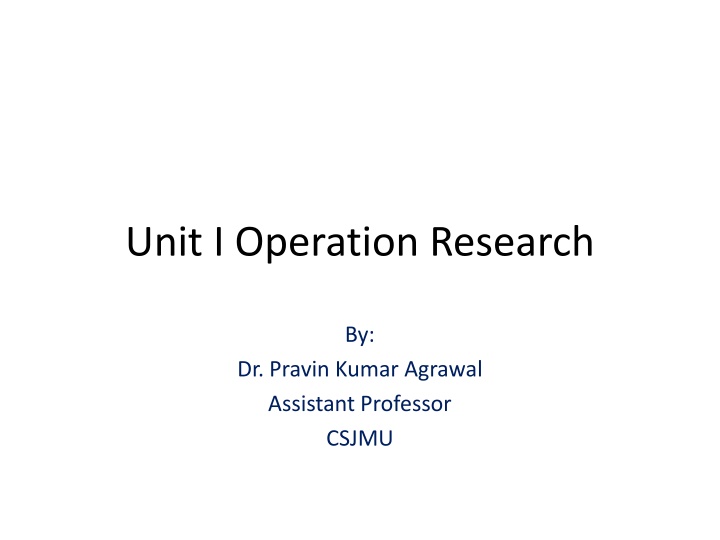

![❤Book⚡[PDF]✔ The Apollo Guidance Computer: Architecture and Operation (Springer](/thumb/21611/book-pdf-the-apollo-guidance-computer-architecture-and-operation-springer.jpg)

